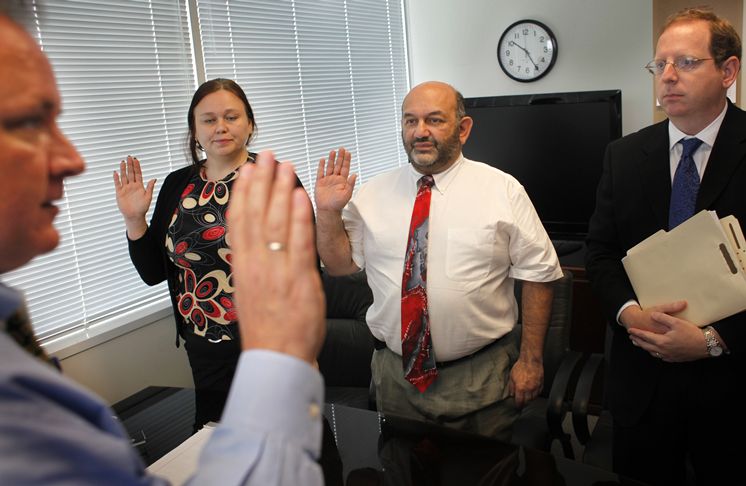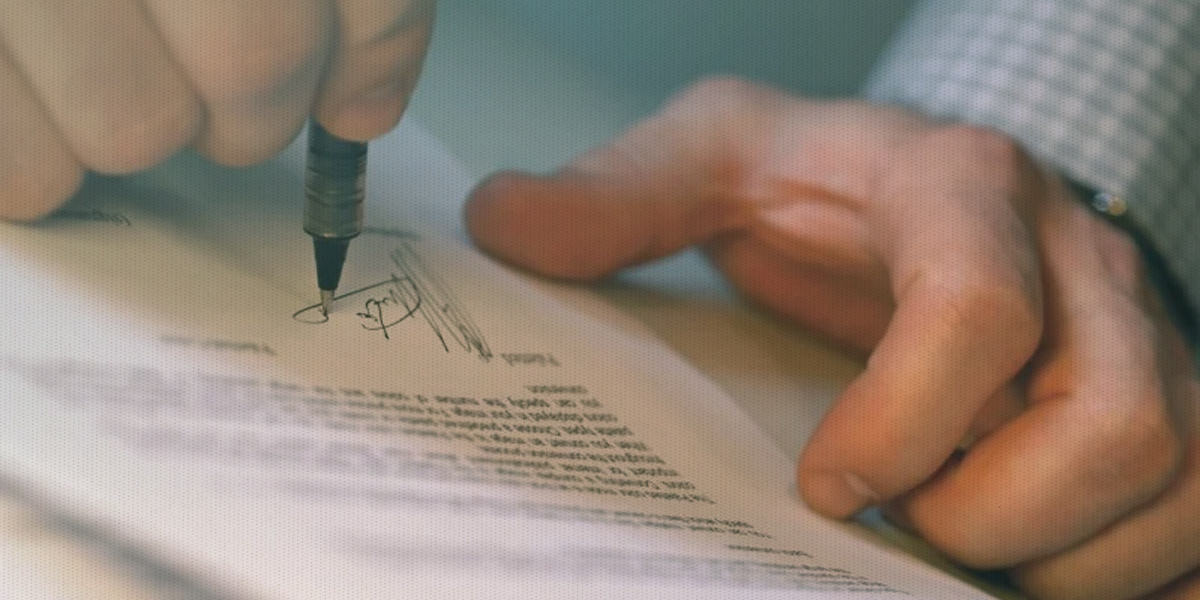
Starting a life together in the United States is an exciting milestone, but it can be intimidating. One of the biggest challenges for couples is proving a bona fide marriage to U.S. Citizenship and Immigration Services (USCIS). It’s not enough to simply be married. You must convince immigration officers that your relationship is genuine, not just a way to get a green card. In this guide, we’ll walk you through exactly what USCIS looks for and how you can confidently demonstrate your real relationship without the stress.
Why Proving a Bona Fide Marriage is Critical
Even after obtaining a marriage-based green card, one of the most important things you must do is prove that your relationship is real and built on love, not just paperwork. U.S. immigration law requires that the marriage be bona fide, meaning it is geniune in nature and wasn’t entered into just to get immigration benefits.
This matters because USCIS officers are trained to look for red flags that may indicate a fraudulent marriage. Under President Trump's extreme vetting policies, we've seen USCIS scrutinize even more. Unfortunately, some people do try to cheat the system. As a result, even couples in honest, committed relationships must provide strong evidence to show their marriage is genuine.
Thus, conditional residents with a two-year green card must file Form I-751, Petition to Remove Conditions on Residence, within the 90-day period before their card expires.
If you cannot prove a bona fide marriage, your 10-year green card may be delayed, denied, or even referred for further investigation. But here’s the good news: if your relationship is legitimate and you’re willing to be open and thorough with your documentation, you’ve got nothing to worry about. The key is knowing what kind of proof USCIS wants to see and presenting it in a way that’s clear and convincing.
Warning Signs There Isn’t a Geninue Marriage
According to a previous edition of Section 21.3 in the Adjudicators Field Manual (AFM), a guide used by USCIS officers to make determinations on immigration cases, there are several factors that could be warning signs of possible marriage fraud. Some of these factors include:
- Large disparity of age;
- Inability of petitioner and beneficiary to speak each other’s language;
- Vast difference in cultural and ethnic background;
- Family and/or friends unaware of the marriage;
- Marriage arranged by a third party;
- Marriage contracted immediately following the beneficiary’s apprehension or receipt of notification to depart the United States;
- Discrepancies in statements on questions for which a husband and wife should have common knowledge;
- No cohabitation since marriage (although there can be valid reasons);
- Beneficiary is a friend of the family; or
- Petitioner filed previous petitions in behalf of aliens, especially alien spouses.
These factors alone do not mean that you don’t have a bona fide marriage. But if one of the above criteria applies to you, you should expect additional scrutiny and more questions from USCIS. For example, a large disparity in age is not a reason to deny your petition. But it is reason for USCIS to look closer for solid proof that you have a bona fide marriage.
Another example would be living separately from your spouse. Certain employment, particular military service, is a reasonable explanation for not living together in the same home. But sometimes this can make it more difficult to prove a bona fide marriage.
Documents Used to Prove a Bona Fide Marriage
A marriage certificate supports the legality of a marriage, but it doesn’t prove that the marriage is genuine for the purposes of removing the conditions on residence. USCIS wants to confirm that both parties entered the marriage in “good faith” and not for the purpose of circumventing immigration laws. When filing Form I-751, you must also submit copies of as many documents as you can to establish this fact and to demonstrate the circumstances of the relationship from the date of marriage to the present date. The documents can include but are not be limited to the following examples:
Evidence of Cohabitation
Generally, a married couple will live together. Although cohabitation is not always the case, it’s an indicator and good evidence to establish the couple has a bona fide marriage. The following are examples of acceptable documents you may use as evidence of cohabitation:
- Deed to property showing both names
- Mortgage or loan documents showing both names
- Lease agreement showing both names
- Driver’s licenses or IDs showing the same address
- Bank statements showing the same address
- Voided or cancelled checks showing the same address
- Utility bills showing the same address (electricity, water, gas, trash, cable, internet, cell phone, etc.)
- Property insurance agreements, statements, or cards showing the same address
- Health and life insurance statements showing the same address
- Correspondence from friends, family, or businesses showing the same address
- Affidavits from friends, family, neighbors, and landlords attesting to cohabitation (see section on affidavits)
Evidence of Raising Children Together
Proof of a child born into the marriage is compelling evidence of a genuine marital relationship. But it’s not necessary that you had children born into the marriage or have any children at all. The following are examples of acceptable documents you may use as evidence of raising children together:
- Birth certificates showing both spouses as parents
- Adoption certificates showing both spouses as parents
- Evidence of a relationship with children or step-children (photos, vacation itineraries, school records, affidavits from friends, family, and teachers)
- Medical records evidencing an ongoing pregnancy
- Evidence showing the non-related parent as an emergency contact for a step-child on school records, doctor’s records, etc.
Evidence of Commingling of Finances
Married couples will generally combine financial resources. This commingling of finances is strong evidence of your good faith marriage. Even if you prefer to keep your finances separate, you may have some evidence of commingling that you may not realize. The following are examples of acceptable documents you may use as evidence of commingling of finances:
- Bank statements for joint checking, savings, and credit card accounts
- Voided and cancelled checks for joint accounts
- Statements for joint loans or loans where one spouse is a co-signor for the other spouse
- Copies of bank statements from separate accounts and cancelled checks showing that you share jointly in your financial responsibilities and big purchases (for example, if each spouse pays half of rent from a separate account or if each spouse paid one half toward the purchase of a car)
- Joint health, life, property, and auto insurance agreements, statements, and cards
- Utility bills showing both names (electricity, water, gas, trash, cable, internet, cell phone, etc.)
- Tax returns filed as married showing both names
- Documents showing joint ownership of real property, cars, or investments
- Life insurance policies, wills, and trusts, designating your spouse as a beneficiary
Evidence of Intimacy
In most cases, couples filing Form I-751 are new to marriage. They’re in the “honeymoon phase” and are probably enjoying life experiences together. There are probably plenty records to demonstrate this. The following are examples of acceptable documents you may use as evidence of intimacy:
- Photos from the couple’s time together in the past two years such as vacations, family dinners, holidays, etc. (Recommendation: List the names of any other individuals in the photos as well as the approximate date and location.)
- Travel itineraries and hotel bookings from joint vacations or trips
- Tickets to events you both attended or plan to attend
- Receipts for any gifts you have purchased for each other
- Cards from friends and family congratulating you on your wedding, anniversary, or other joint life events
- Evidence that each spouse has met or communicated with the other spouse’s parents and relatives such as photos, letters, cards, or emails
- Phone and text message records showing that you and your spouse communicate on a regular basis
- Social media records such as screen shots of Facebook pages, posts and Twitter messages that show you spending life events together
Affidavits
Affidavits are written statements from people who know you and can confirm that your marriage is real. The statement helps to support other types of evidence listed above. Affidavits can come from family members, friends, landlords, or religious leaders, anyone who has seen your relationship grow over time.
Each affidavit should include personal observations, like how long they’ve known you, how they’ve seen your relationship develop, and why they believe your marriage is genuine. It's helpful if the person includes specific details, such as attending your wedding or seeing you interact as a couple.
You must submit the original affidavit with your petition package. Two is sufficient; there's no need to submit more than four.
Although we’ve listed numerous examples of evidence to prove that you and your spouse have a bona fide marriage, don’t limit yourself to the above documents. Include any other documents that you consider relevant to establish that your marriage was not entered for the purpose of evading U.S. immigration laws. When collecting your own documents, think about the activities and obligations that a typical married couple will experience. If you can provide evidence of these life events experienced together, you help to build your case of a good faith marriage and a successful I-751 petition. Likewise, this list is not a guarantee that your case will be approved.
Generally, the more evidence that you can produce from these different categories, the better. Your goal is to get the I-751 petition approved and become a lawful permanent resident with a 10-year green card.
How CitizenPath Helps You Prepare Form I-751
If you have a two-year conditional green card based on marriage, you’ll need to file Form I-751 to remove the conditions and keep your permanent resident status. It’s a crucial step, and getting it wrong could lead to delays or even loss of status.
That’s where CitizenPath can help. Our service provides simple, affordable, step-by-step guidance through Form I-751. Individuals, attorneys and non-profits use the service on desktop or mobile device to prepare immigration forms accurately, avoiding costly delays.
You’ll also get personalized instructions for assembling your petition package and friendly customer support when you have a question. CitizenPath gives you the peace of mind that your petition package is complete and ready for USCIS. Learn more about the Removal of Conditions Package.
Want more immigration tips and how-to information for your family?
Sign up for CitizenPath’s FREE immigration newsletter and
SAVE 10%
on our immigration services






